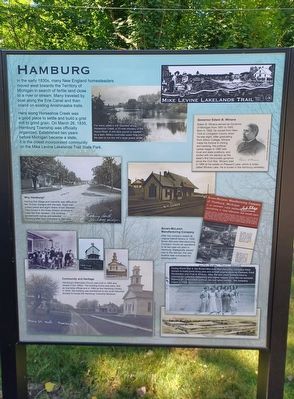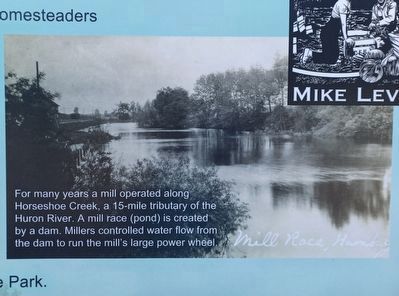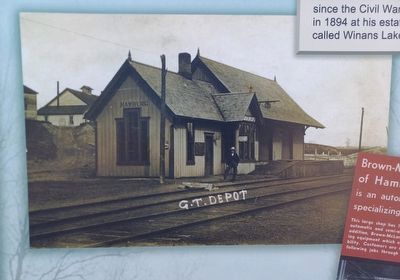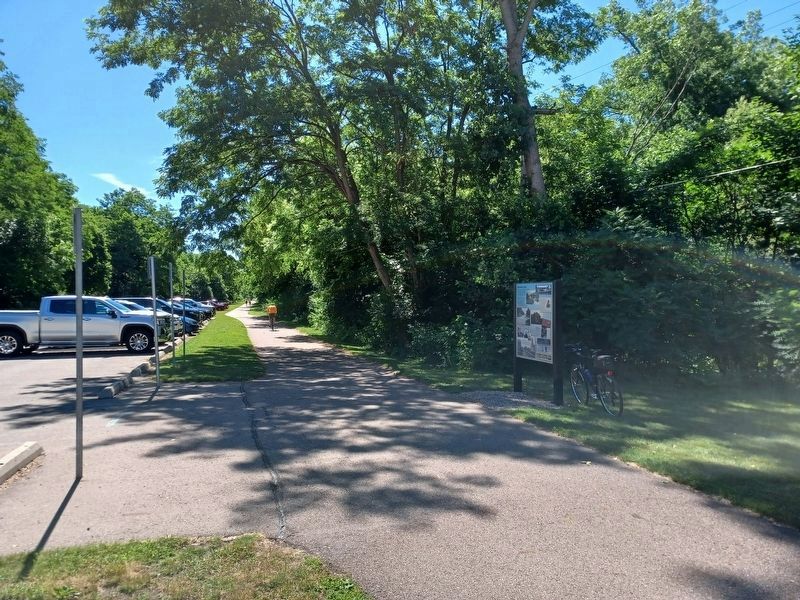Hamburg Township in Livingston County, Michigan — The American Midwest (Great Lakes)
Hamburg
In the early 1830s, many New England homesteaders moved west towards the Territory of Michigan in search of fertile land close to a river or stream. Many traveled by boat along the Erie Canal and then inland on existing Anishinaabe trails.
Here along Horseshoe Creek was a good place to settle and build a grist mill to grind grain. On March 26, 1835, Hamburg Township was officially organized. Established two years before Michigan became a state, it is the oldest incorporated community on the Mike Levine Lakelands Trail State Park.
Erected 2022 by Mike Levine Lakelands Trail, Michigan History Center, Michigan Department of Natural Resources.
Topics. This historical marker is listed in these topic lists: Industry & Commerce • Settlements & Settlers • Waterways & Vessels. A significant historical date for this entry is March 26, 1835.
Location. 42° 26.846′ N, 83° 48.043′ W. Marker is near Hamburg, Michigan, in Livingston County. It is in Hamburg Township. Marker is on Hamburg Road, 0.1 miles south of Stone Street, on the left when traveling south. Marker is along the Mike Levine Lakelands Trail and can be seen from the Hamburg trailhead parking lot. Touch for map. Marker is in this post office area: Hamburg MI 48139, United States of America. Touch for directions.
Other nearby markers. At least 8 other markers are within 3 miles of this marker, measured as the crow flies. Travelers Stop (within shouting distance of this marker); Trains to Hamburg (about 300 feet away, measured in a direct line); St. Stephen's (about 700 feet away); Hamburg / Edwin B. Winans (approx. 0.3 miles away); Huron River (approx. 1.7 miles away); Homesite of Edwin B. Winans (approx. 2.4 miles away); The Big Chill (approx. 2½ miles away); Chain of Lakes (approx. 2.6 miles away). Touch for a list and map of all markers in Hamburg.
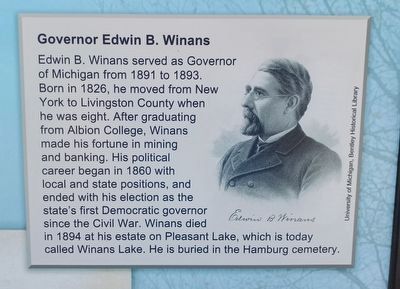
University of Michigan, Bentley Historical Library
3. Hamburg Marker Governor Edwin B. Winans
Edwin B. Winans served as Governor of Michigan from 1891 to 1893. Born in 1826, he moved from New York to Livingston County when he was eight. After graduating from Albion College, Winans made his fortune in mining and banking. His political career began in 1860 with local and state positions, and ended with his election as the state's first Democratic governor since the Civil War. Winans died in 1894 at his estate on Pleasant Lake, which is today called Winans Lake. He is buried in the Hamburg cemetery.
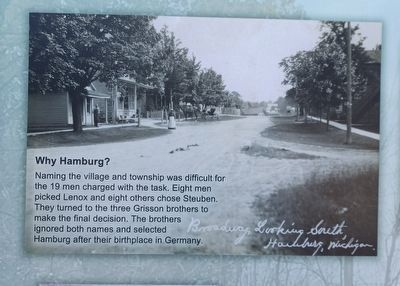
Hamburg Historical Society
4. Hamburg Marker Why Hamburg?
Naming the village and township was difficult for the 19 men charged with the task. Eight men picked Lenox and eight others chose Steuben. They turned to the three Grisson brothers to make the final decision. The brothers ignored both names and selected Hamburg after their birthplace in Germany.
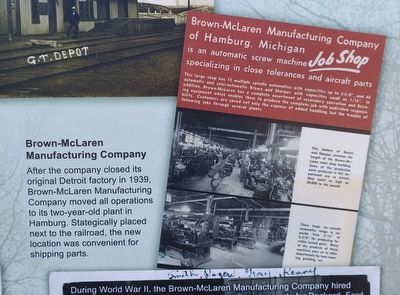
Hamburg Historical Society
6. Hamburg Marker Brown-McLaren Manufacturing Company
After the company closed its original Detroit factory in 1939, Brown-McLaren moved all operations to its two-year-old plant in Hamburg. Strategically placed next to the railroad, the new location was convenient for shipping parts.
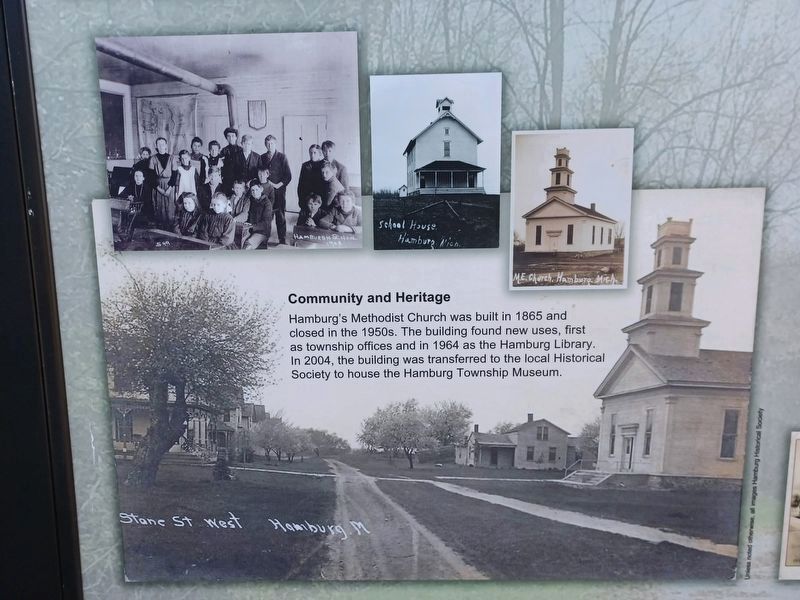
Hamburg Historical Society
7. Hamburg Marker Community and Heritage
Hamburg's Methodist Church was built in 1865 and closed in the 1950s. The building found new uses, first as township offices and in 1964 as the Hamburg Library. In 2004, the building was transferred to the local Historical Society to house the Hamburg Township Museum.
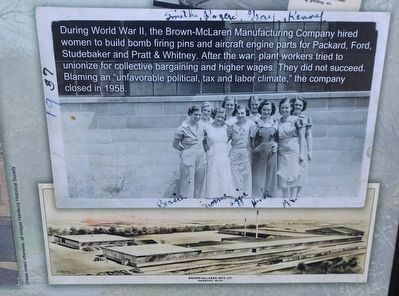
Hamburg Historical Society
8. Hamburg Marker bottom right images
During World War II, the Brown-McLaren Manufacturing Company hired women to build bomb firing pins and aircraft engine parts for Packard, Ford, Studebaker and Pratt & Whitney. After the war, plant workers tried to unionize for collective bargaining and higher wages. They did not succeed. Blaming an "unfavorable political, tax and labor climate," the company closed in 1958.
Credits. This page was last revised on May 1, 2023. It was originally submitted on July 11, 2022, by Joel Seewald of Madison Heights, Michigan. This page has been viewed 230 times since then and 40 times this year. Photos: 1, 2, 3, 4, 5, 6, 7, 8, 9. submitted on July 11, 2022, by Joel Seewald of Madison Heights, Michigan.
